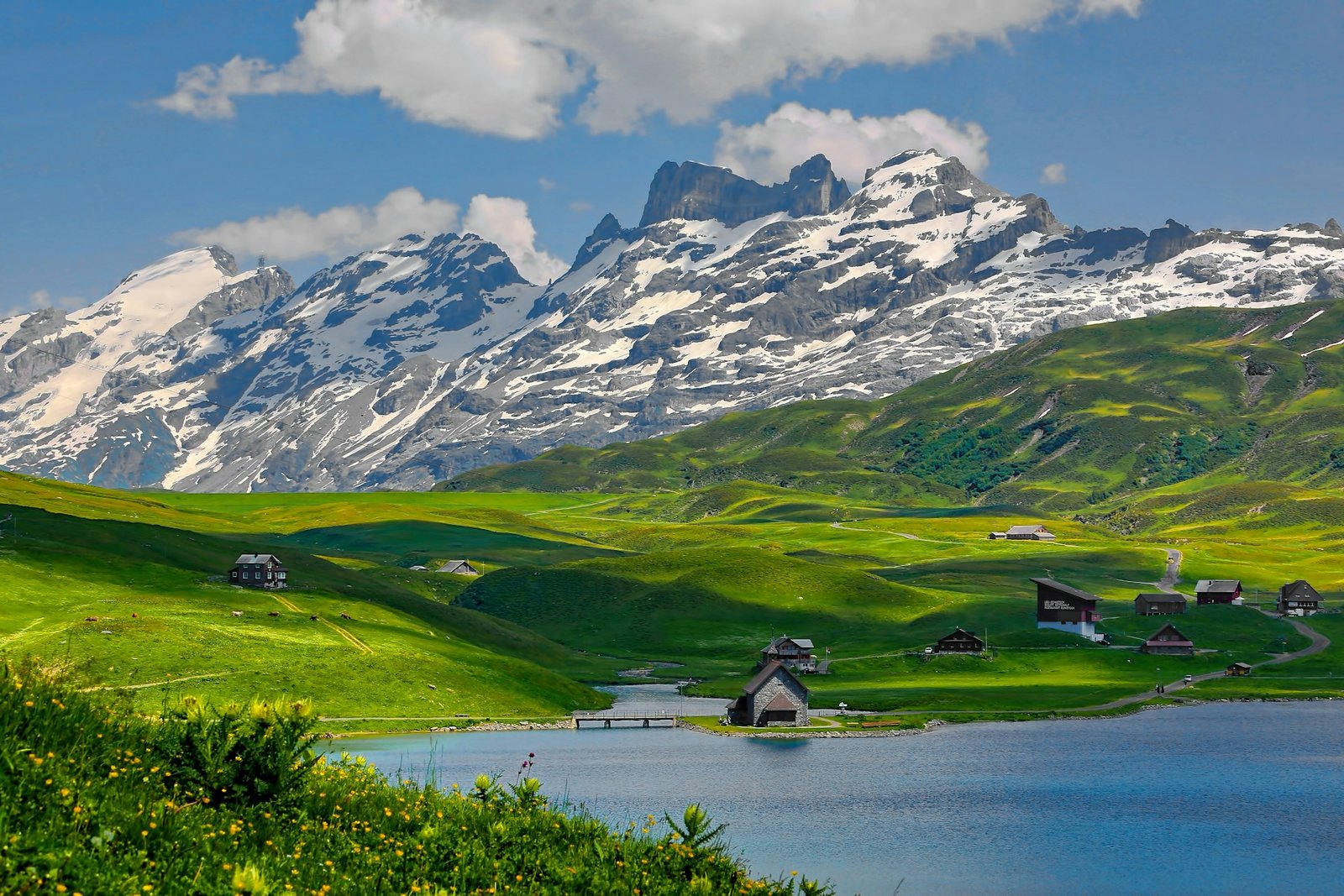Planning a multi-city trip to Europe can feel overwhelming, but trust me, it’s easier than you think! I’ve been there, navigating from one European gem to another, and I’ve learned a few things along the way. Whether you’re a first-time traveler or a seasoned explorer, hopping between multiple European cities is the best way to experience the continent’s diverse cultures, mouth-watering cuisines, and stunning landscapes all in one go. This guide will show you how to plan a multi-city trip to Europe with ease, from picking the right destinations to booking transport, accommodations, and making the most of your time abroad. Ready to explore Europe like never before? Let’s dive in!
Quick Guide: Planning a Multi-City Trip to Europe
1. Choose Your Destinations:
- Base your choices on interests like history, food, or nature. Popular routes: London–Paris–Amsterdam or Barcelona–Rome–Athens.
2. Plan Your Travel Dates:
- Best times: Spring (April-June) or Fall (Sept-Nov). Stay 3-5 days in major cities, 2-3 days in smaller ones.
3. Book Transportation:
- Use trains for short distances, budget flights for longer ones. Apps like Omio help compare routes and prices.
4. Select Accommodations:
- Mix hotels, hostels, or vacation rentals based on your budget. Book centrally to minimize travel time.
5. Plan Your Itinerary:
- Prioritize key attractions but leave time for spontaneous exploration. Balance must-sees with local hidden gems.
6. Budgeting Tips:
- Travel off-peak, use public transport, and explore free attractions like city walking tours.
7. Packing Essentials:
- Pack light! Stick to versatile, layered clothing and comfortable shoes. Bring a portable charger and a travel adapter.
8. Stay Connected:
- Get a local SIM card or use free Wi-Fi. Download offline maps for easy navigation.
9. Safety Tips:
- Carry copies of important documents, use anti-theft bags, and be aware of local scams.
10. Health & Insurance:
- Always have travel insurance. Carry basic first-aid and check health guidelines for each destination.
With this quick guide, you’re ready to plan your multi-city European adventure efficiently!
Why Choose a Multi-City Trip to Europe?

Europe is the perfect playground for a multi-city trip. The countries are close together, the transportation network is top-notch, and there are so many unique experiences waiting for you just around the corner. Here’s why planning a multi-city trip to Europe is such a great idea:
- Maximize Your Time and Experience: No need to waste time backtracking. You can travel in a logical sequence, hitting multiple spots without needing to return to your starting point.
- Diverse Cultures and Landscapes: In one trip, you can explore the beaches of Spain, the canals of Amsterdam, and the snowy Alps of Switzerland.
- Flexible Budget Options: You can mix and match expensive cities like Paris or Zurich with more affordable gems like Lisbon or Budapest.
Step 1: Choose Your Destinations
Consider Your Interests and Preferences
Start by thinking about what excites you the most. Are you into history, a food lover, or maybe an adventure seeker? Choose cities that match your passions:
- History and Architecture Lovers: Dive into Rome, Athens, Prague, or Vienna.
- Food and Wine Enthusiasts: Savor the delights of Paris, Barcelona, Florence, or Bordeaux.
- Nature and Adventure Seekers: Explore the rugged beauty of Interlaken, Reykjavik, or the Scottish Highlands.
Map Out a Logical Route
When planning a multi-city trip to Europe, mapping out your route logically is crucial. Avoid backtracking by starting with a city that has good international flight connections and plan your path based on proximity and available transport links. Here’s a sample route:
- Classic Route: London → Paris → Amsterdam → Berlin → Prague
- Mediterranean Route: Barcelona → Nice → Rome → Athens
Step 2: Plan Your Travel Dates and Duration
Optimal Time to Visit
Europe is beautiful year-round, but the best time to visit depends on what you want to do:
- Spring (April to June): Perfect for mild weather, blossoming flowers, and fewer tourists.
- Summer (July to August): Great for beach lovers but expect crowds and higher prices.
- Autumn (September to November): Experience cool weather, stunning fall foliage, and fewer crowds.
- Winter (December to February): Ideal for winter sports and Christmas markets, though some places may be cold and less accessible.
Duration of Stay per City
Wondering how long to stay in each city? Here’s a quick guide:
- Large Cities (Paris, London, Rome): Spend 3-5 days.
- Mid-Sized Cities (Amsterdam, Prague, Lisbon): Allocate 2-3 days.
- Smaller Towns or Villages: 1-2 days should be enough.
Step 3: Book Your Transportation
Choosing the Right Mode of Transport
Getting around Europe is easy with multiple transport options:
- Flights: Best for covering long distances quickly. I love using budget airlines like Ryanair or EasyJet for cheap flights.
- Trains: Perfect for short to medium distances. High-speed trains like Eurostar are fast and comfy, while local trains offer scenic views.
- Buses: Great for budget travelers. FlixBus, for example, has an extensive network across Europe.
- Car Rentals: Ideal for exploring rural areas or going on scenic drives like the Amalfi Coast or the Scottish Highlands.
Tips for Booking Transportation
- Book in Advance: Train and flight tickets are usually cheaper if you buy them early.
- Use Transportation Apps: Apps like Omio and Rome2Rio are fantastic for comparing prices and routes.
- Consider a Rail Pass: If you’re taking multiple train journeys, a Eurail Pass can save you money.
Step 4: Choose Your Accommodation
Types of Accommodation
Finding the right place to stay can make or break your trip. Here are some options to consider:
- Hotels: Great for comfort and amenities, especially if you’re on a short stay or looking for luxury.
- Hostels: Perfect for budget travelers or those looking to meet other travelers.
- Vacation Rentals: Ideal for families or groups who need more space and prefer cooking some meals.
- Guesthouses and B&Bs: Offer a more personal touch and often include breakfast.
Booking Tips
- Location Matters: Stay close to the city center or main attractions to save time and transport costs.
- Check Reviews and Ratings: Sites like Booking.com and TripAdvisor offer reviews and ratings to help you choose the best places.
- Book Flexible Rates: Opt for flexible booking options that allow free cancellations.
Step 5: Plan Your Itinerary and Activities
Must-See Attractions and Hidden Gems
Sure, you want to see the big attractions, but don’t skip the hidden gems! Here’s what I recommend:
- Paris: See the Eiffel Tower, but also explore the covered passages like Galerie Vivienne.
- Rome: Visit the Colosseum, but take a day trip to the ancient ruins of Ostia Antica.
- Barcelona: Admire the Sagrada Familia, but take time to stroll through the El Raval neighborhood.
Use a Day-by-Day Approach
Plan your itinerary in a way that balances sightseeing with relaxation:
- Morning: Major attractions when they’re less crowded.
- Afternoon: Museums, shopping, or leisurely activities.
- Evening: Enjoy local dining and nightlife.
Step 6: Budgeting and Currency Tips
Create a Realistic Budget
Keep track of all costs including transportation, accommodation, meals, and daily expenses. I love using apps like Trail Wallet to manage expenses.
Save Money While Traveling
- Travel During Off-Peak Times: Flights and accommodations are cheaper during weekdays or shoulder seasons.
- Use Local Transportation: Buses and subways are cheaper than taxis.
- Explore Free Attractions: Many cities offer free walking tours or museums with free entry days.
Step 7: Pack Smart and Light
Packing Essentials
Travel light! It makes moving between cities so much easier. Here’s what I recommend:
- Layered Clothing: Useful for varying climates.
- Comfortable Shoes: Essential, as you’ll be doing a lot of walking.
- Compact Luggage: Stick to a carry-on or backpack for mobility.
Travel Gadgets and Accessories
Invest in essentials like a portable charger, universal adapter, and a reusable water bottle.
Step 8: Navigating Local Customs and Etiquette
Basic Phrases to Learn
A few local phrases can go a long way. Here are some essentials:
- Hello and Goodbye: Bonjour (French), Hola (Spanish), Ciao (Italian).
- Please and Thank You: Bitte and Danke (German), Por Favor and Gracias (Spanish).
Respecting Local Cultures
Be aware of cultural norms like tipping, dress codes for religious sites, and queuing etiquette.
Step 9: Stay Connected and Secure
Connectivity Tips
Staying connected is a must for navigating new cities and staying in touch:
- Get a Local SIM Card or eSIM: It’s often the most affordable way to get data.
- Use Free Wi-Fi Carefully: Avoid using public Wi-Fi for sensitive transactions.
- Download Offline Maps: Google Maps or Maps.me are lifesavers when you don’t have data.
Security Tips
Safety first! Here are some tips to protect yourself and your belongings:
- Keep Copies of Important Documents: Both digital and physical.
- Use Anti-Theft Gear: I always use a bag with lockable zippers and sometimes a money belt.
- Stay Aware of Scams: Familiarize yourself with common travel scams.
Step 10: Prepare for Health and Safety
Health Precautions
Stay healthy while traveling:
- Get Travel Insurance: Providers like World Nomads or Allianz are good choices.
- Pack a First-Aid Kit: Include pain relievers, band-aids, antiseptic wipes, and any prescription medications.
- Check Vaccination Requirements: Make sure you’re up to date on any necessary vaccines.
Emergency Preparedness
Always be prepared for the unexpected:
- Know Local Emergency Numbers: In most of Europe, dial 112 for emergencies.
- Register with Your Embassy: This can be helpful in case of emergencies.
- Stay Informed: Follow local news for safety and weather updates.
Conclusion

Now you’re equipped with everything you need to plan a fantastic multi-city trip to Europe! From choosing your destinations to navigating local customs, this guide will help you make the most of your adventure. Remember, the key to a great trip is preparation, but also embracing spontaneity and enjoying every moment of your journey. So pack your bags and get ready for an unforgettable European adventure!
By following this guide, you’re set to create the European adventure of a lifetime! Happy travels!
FAQ Section
How do I choose the best cities for a multi-city trip to Europe?
Start by considering your interests (history, culture, nature) and budget. Choose cities that are close geographically to avoid long travel times. Popular routes include London–Paris–Amsterdam or Barcelona–Rome–Athens. Tailor your trip based on what excites you most, whether it’s food, art, or adventure.
How far in advance should I book transportation for a multi-city trip in Europe?
For the best prices, book flights 2-3 months in advance. Train and bus tickets are often cheaper when booked early, particularly for high-speed services like the Eurostar or Thalys. Apps like Omio or Rome2Rio help compare routes and prices. Avoid last-minute bookings to save money and secure your ideal schedule.
What’s the best way to travel between cities in Europe?
The best mode of transport depends on distance. For short trips, trains are scenic and efficient. Buses are budget-friendly but slower. For longer distances, low-cost airlines like Ryanair or EasyJet are faster. Car rentals are ideal for rural or scenic routes, but avoid driving in crowded city centers.
How many days should I spend in each city on a multi-city trip?
Spend 3-5 days in major cities like Paris or Rome to cover key attractions without feeling rushed. Smaller cities like Amsterdam or Prague usually require 2-3 days. For towns or villages, 1-2 days should suffice. Balance your itinerary to allow for both sightseeing and relaxation without overwhelming yourself.
How can I stick to a budget on a multi-city European trip?
To save money, travel during off-peak times, use budget airlines and trains, and stay in hostels or vacation rentals. Eat at local markets or street vendors instead of pricey restaurants. Take advantage of free walking tours and museum days. Planning in advance and using travel apps can help keep expenses under control.
What is the best time of year for a multi-city trip to Europe?
Spring (April to June) and fall (September to November) offer mild weather and fewer crowds, making them ideal. Summer (July to August) has the best weather but is crowded and expensive. Winter is good for budget travelers, especially for Christmas markets, though some attractions may be limited due to weather.
Do I need travel insurance for a multi-city trip to Europe?
Yes, travel insurance is essential for covering unexpected events like medical emergencies, trip cancellations, or lost luggage. Providers like World Nomads and Allianz offer plans tailored to multi-city travel. Be sure your policy covers all the countries you’ll visit, and always carry a copy of your policy while traveling.
Is it better to book a multi-city trip through a travel agent or on my own?
Booking on your own gives more flexibility and often saves money, especially with tools like travel comparison apps. A travel agent can be helpful if you’re unfamiliar with the region or want a hassle-free experience. They can offer customized itineraries, but DIY planning offers more control over your schedule and budget.
How do I handle different currencies during a multi-city trip to Europe?
Most European countries use the Euro, but some (like the UK or Switzerland) have their own currencies. Use a travel-friendly credit card to avoid currency exchange fees, or get a multi-currency travel card. Withdraw local currency from ATMs when needed, but avoid high-exchange-rate kiosks at airports and tourist spots.
What should I pack for a multi-city trip to Europe?
Pack light and versatile clothing, as you’ll be moving between cities. Opt for layered outfits to accommodate different climates. Comfortable shoes are a must for walking tours. Also, bring a portable charger, travel adapter, and reusable water bottle. Keep your luggage compact—carry-on-sized bags work best for mobility.






